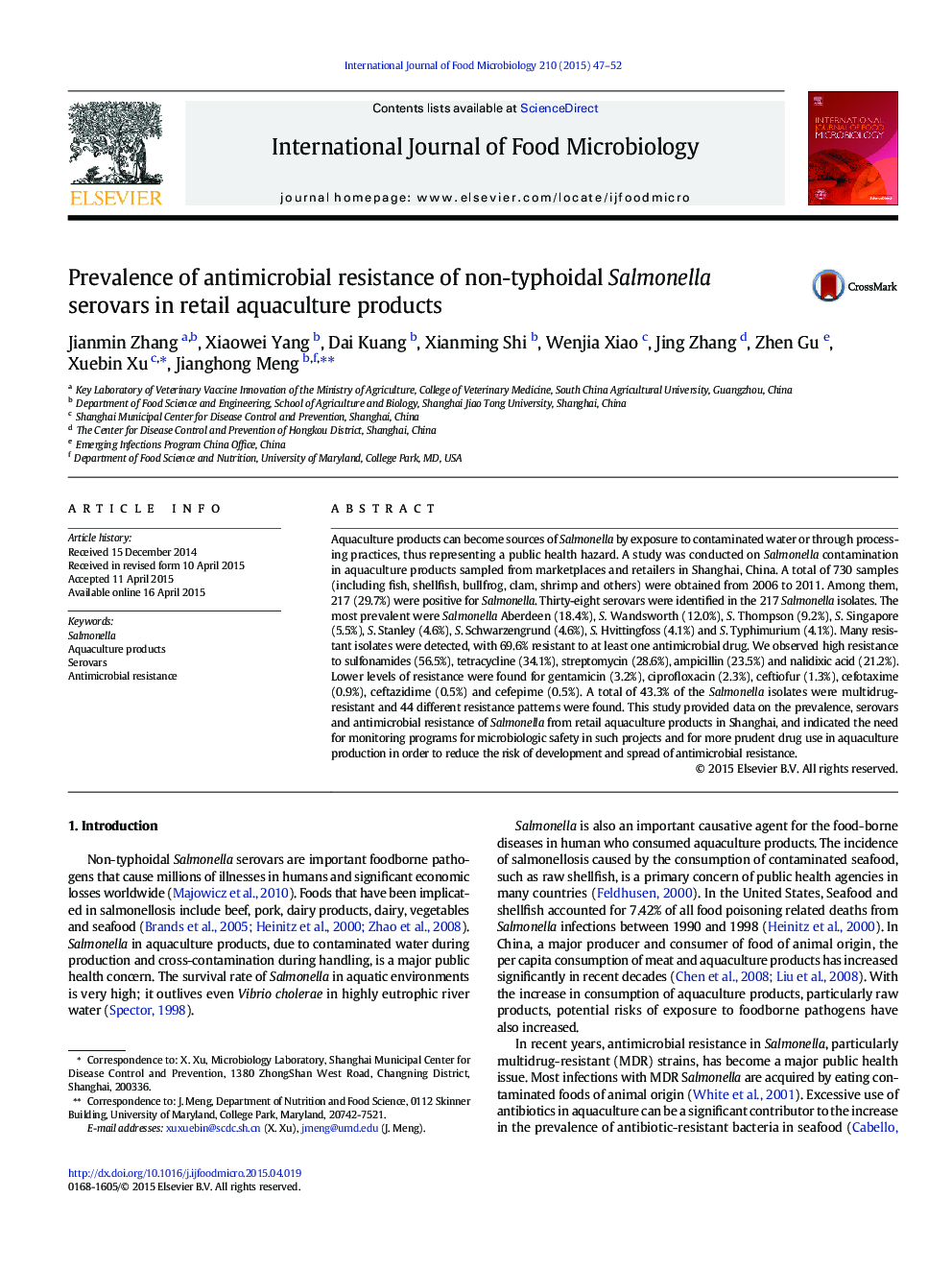| Article ID | Journal | Published Year | Pages | File Type |
|---|---|---|---|---|
| 4366487 | International Journal of Food Microbiology | 2015 | 6 Pages |
•Salmonella was isolated from retail aquaculture products in Shanghai, China.•S. Aberdeen was the commonest serovar; other uncommon serovars were also identified.•Food products of aquatic origin may serve as a source of Salmonella and pose a health risk.•Antimicrobial resistance was common among the Salmonella isolates from aquaculture products.
Aquaculture products can become sources of Salmonella by exposure to contaminated water or through processing practices, thus representing a public health hazard. A study was conducted on Salmonella contamination in aquaculture products sampled from marketplaces and retailers in Shanghai, China. A total of 730 samples (including fish, shellfish, bullfrog, clam, shrimp and others) were obtained from 2006 to 2011. Among them, 217 (29.7%) were positive for Salmonella. Thirty-eight serovars were identified in the 217 Salmonella isolates. The most prevalent were Salmonella Aberdeen (18.4%), S. Wandsworth (12.0%), S. Thompson (9.2%), S. Singapore (5.5%), S. Stanley (4.6%), S. Schwarzengrund (4.6%), S. Hvittingfoss (4.1%) and S. Typhimurium (4.1%). Many resistant isolates were detected, with 69.6% resistant to at least one antimicrobial drug. We observed high resistance to sulfonamides (56.5%), tetracycline (34.1%), streptomycin (28.6%), ampicillin (23.5%) and nalidixic acid (21.2%). Lower levels of resistance were found for gentamicin (3.2%), ciprofloxacin (2.3%), ceftiofur (1.3%), cefotaxime (0.9%), ceftazidime (0.5%) and cefepime (0.5%). A total of 43.3% of the Salmonella isolates were multidrug-resistant and 44 different resistance patterns were found. This study provided data on the prevalence, serovars and antimicrobial resistance of Salmonella from retail aquaculture products in Shanghai, and indicated the need for monitoring programs for microbiologic safety in such projects and for more prudent drug use in aquaculture production in order to reduce the risk of development and spread of antimicrobial resistance.
